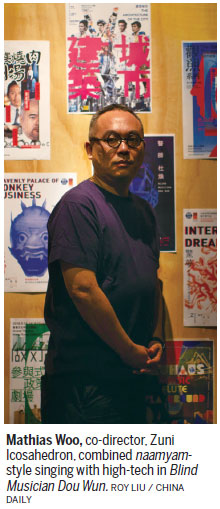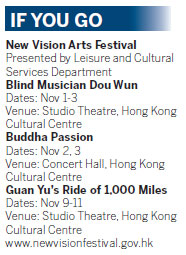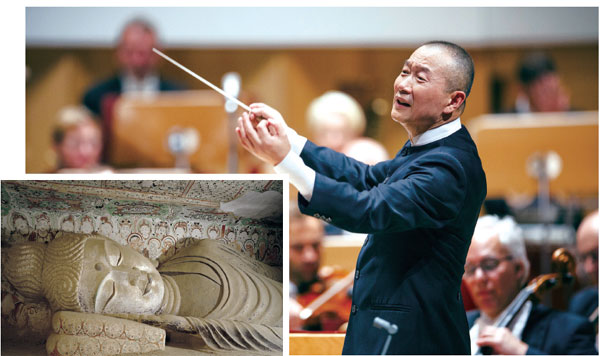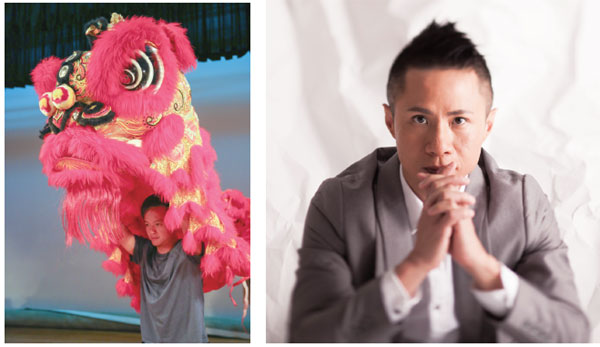Face-lift for traditional acts
Updated: 2018-10-19 07:50
(HK Edition)
|
|||||||||
Reinterpreting Chinese cultural staples aided by technology is one of the hallmarks of the ninth edition of New Vision Arts Festival which kicks off tonight. A report by Rebecca Lo.
Identity has long been entwined with art. As a city in a perpetual state of flux, Hong Kong continuously redefines itself. The idea of reinventing older modes of artistic expression is reflected in the program of the cutting-edge biannual festival of performing arts, New Vision Arts Festival (NVAF), now in its ninth iteration.
NVAF is one of the local government's large-scale signature events. In the past 16 years, it has grown into a hotbed of experimentation.
In keeping with its mandate to broaden the definition of art, the opening performance Tree of Codes by the United Kingdom's Company Wayne McGregor crosses boundaries by combining dance with literature, sculpture and architecture. Another Asian premiere is Aquasonic by Denmark's Between Music, a musical concert performed entirely under water that challenges preconceptions of sound and science.
Alongside international offerings, this year's roster includes a number of original works that explore what it means to be Chinese. ArtSnap returns this year to run concurrently with NVAF, with nine of 12 productions commissioned specifically for this year's festival. Seeded by the 2016 NVAF ArtSnap production The Lion Rocks, choreographer and artistic director Daniel Yeung re-examines traditional lion dances, dissecting them into music, dance and visual components. He then reassembles them afresh in Guan Yu's Ride of 1,000 Miles, a performance telling the stories of Three Kingdoms (220-280) hero Guan Yu. The show debuts at this year's NVAF.
"The lion dance symbolizes local cultural heritage for me," explains Yeung. "It is timeless: No matter how much Hong Kong society has changed, the dance is always there to represent us. The stories of Guan Yu led to the poetry in the performance - from purely solid physical works of dance and martial arts to creative visual and audio multimedia theater."
Yeung was inspired by the athletic choreography of lion dancers as they snake through a crowd. "Its unique physicality provides new sources of dual partnering techniques, while Cantonese kung fu practices became a new vocabulary for dance and choreography," he notes.
"Also, the lion dance's inner technique and philosophy provide both new perspectives for me as a choreographer as well as new interpretations for all participating artists as performers and multimedia creators."
Multimedia technology played a key role in Yeung's production, acting as a conduit connecting dance with visual and audio design. Yeung says the performance space in Hong Kong Cultural Centre will be "re-created - by merging traditional lion dance tall pillars and benches in a feng shui matrix setting with contemporary multimedia visual creations".
"We let the dance happen on various levels of the stage, on the third floor to various elevations on the fourth floor balcony level. The show is tailor-made for this unique space, allowing audiences to appreciate the dance from all possible surfaces."
Dunhuang ditties
Another much anticipated show at NVAF is Oscar-winning composer Tan Dun's Asian premiere of Buddha Passion following its Dresden world premiere in May. Tan will conduct the six-act epic with a 200-member, star-studded cast including soprano Maria Chiara Chizzoni, indigenous performer Tan Weiwei, singers from Germany's International Choir Academy Lbeck and Hong Kong Philharmonic Chorus, and musicians from Hong Kong Philharmonic Orchestra.

Sung in Chinese and Sanskrit, Buddha Passion is the first story set in the Western Christian passion choral tradition featuring Buddha's lessons. Tan was awed by the UNESCO World Heritage Mogao Caves near Dunhuang, a Gansu desert town along the Silk Route long regarded as a hub for Buddhist worship and study. He subsequently spent two years studying the fourth to 14th century cave murals and ancient musical manuscripts from the Dunhuang Library Cave.
The result is a sweeping re-creation of the spirit of the Mogao Caves through chant, sounds and music of Buddhist philosophy, broken into six self-contained short stories of love, forgiveness, sacrifice and salvation. Obsolete musical instruments such as the fantan pipa and xiqin were painstakingly reconstructed by Tan to evoke long-forgotten Tang Dynasty (618-907) rhythms, adding to the ethereal quality of the performance.
Another NVAF highlight is local experimental theater company Zuni Icosahedron's latest audio-visual production, Blind Musician Dou Wun. Zuni's co-artistic director Mathias Woo was inspired by the recordings of Dou's works by Bell Yung in the 1970s. Dou's artistic practice combines both singing and storytelling, following the naamyam style - one of the oldest forms of Chinese performing arts.
"I'm using Professor Yung's recordings as a foundation to tell the story of Dou Wun, aided by the latest sound and laser project-tracking technology," Woo shares. "The narrative is Dou Wun's own story, told through his words. The soundscape tech replicates an old Hong Kong tea house filled with his sounds and vocals. It is also like reading a graphic essay that mixes motion, text, visuals, photos and moving images. Audiences can experience an old Hong Kong art form in the context of innovation and technology."
Woo believes that compelling storytelling helps bridge the time span between Dou's original work and contemporary audiences. "It's a process of rediscovery," he says. "No matter if it is from the south or far north of China, the oldest art form in the country is based on a storytelling format. Diversity of sound marks the differences between the various styles of storytelling. Chinese culture is about many expressions based on a shared concept."
Like Yeung, Woo feels that NVAF is an ideal platform for staging Zuni's productions: "Zuni advocates experimentation and innovation; we integrate cross-disciplinary and cross-cultural collaborations. NVAF is structured in the same direction - exploring new ideas and presenting cross-disciplinary works. Admittedly, technology is becoming more dominant and powerful in every aspect of our life, including art and politics. Zuni has always been very conscious of how technology and society shapes art. Before one can innovate, one needs to be experimental."

|
Buddha Passion by Oscar-winning composer Tan Dun - inspired by the art in the Mogao Caves in Dunhuang - is a show to watch out for at the New Vision Arts Festival. Photos provided to China Daily |
|
Guan Yu’s Ride of 1,000 Miles created by dancer-choreographer Daniel Yeung (right) makes use of traditional Chinese lion dance techniques to tell the story of a mythical fi gure from Three Kingdoms (220-280) period. Photos provided to China Daily |
(HK Edition 10/19/2018 page10)

